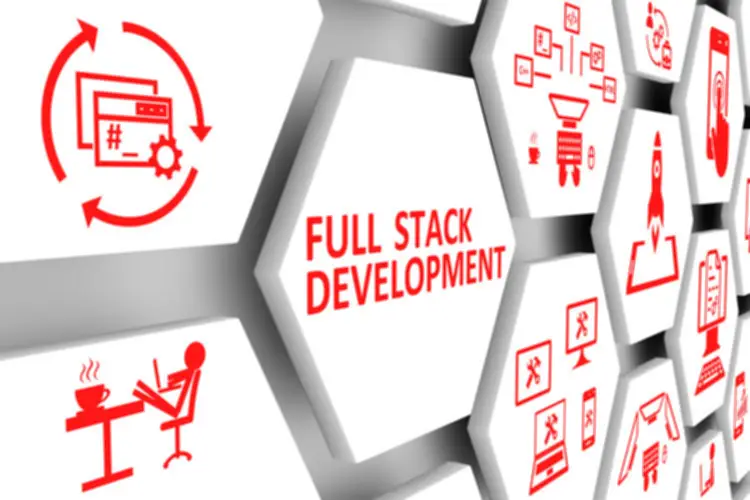Microservices structure breaks down an utility into a collection of smaller, interconnected companies. Instead, communication is mediated by an middleman generally identified as an API Gateway. The API Gateway is responsible for microservices vs monolith duties such as load balancing, caching, access management, API metering, and monitoring.
Disadvantages Of Using A Monolithic Structure
Microservices are normally developed and owned by distinct teams, permitting for particular person components to be updated independently from the rest of the system. This decentralized structure necessitates a powerful grasp of system interdependencies and collaborative operations amongst engineering, observability, and DevOps groups within a cloud native framework. A lot is dependent upon the complexity and dimension of your corporation; this might be some of the vital elements in deciding whether to go along with microservices vs. monolithic legacy methods. In this example, we haven’t adopted the tutorial definition of a microservice structure, where each service is modeled round a business area. Instead, we have chosen to be pragmatic and create microservices because we want to use a particular know-how and because we would like to have the power to scale some providers independently.
Benefits Of Utilizing A Microservices Structure
All the following pointers are aimed toward creating a scalable and high-performing app with a give consideration to safety and reliability. The communication in the microservices structure usually occurs via API, commonplace protocols, or by publishing messages to a broker and each unit has its personal operate. In this way, each element is also separately deployed and maintained and may be shortly up to date upon request. Yes, they have sure issues (more on them below) however on the similar time, monolithic purposes have several benefits that are actually onerous to beat.
The Evolution Of Software Structure
This additionally allows every utility to make use of the database greatest suited to its wants. Building a new ecommerce platform from scratch or altering your tech stack could be tedious and time-consuming, which is why it’s crucial to choose on the best architecture strategy for your business needs. We also can choose to maintain the recommendation service as a microservice since this shall be written in a special language from the other companies.
- This decentralized structure necessitates a strong grasp of system interdependencies and collaborative operations among engineering, observability, and DevOps groups inside a cloud native framework.
- The team can abstract from the underlying infrastructure, bundle their code in containers, and deploy them.
- In such techniques, each software element receives its devoted computing sources, enabling unbiased scaling based on present requirements and expected future calls for.
- You can have a glance at what different startups are doing, or what the technology giants of right now did once they were much smaller.
- If you want to manage everything from a single codebase, monolithic structure makes sense as nicely.

On the other hand, one of the troublesome tasks I truly have worked on was a large old monolith with little to no automation. We can’t assume we will have a great time just because we select monolith over microservices. When you have to launch a new characteristic or update, you have to redeploy the entire monolith. This is normally a riskier and more advanced course of, particularly if the adjustments are substantial. In contrast, the Microservices structure breaks down an application into a group of smaller, independently deployable companies. Each service is answerable for specific functionalities and communicates with others via well-defined APIs.
In Conclusion, if you’re building a small project, a monolithic architecture is like having every thing in a single big box, which can be simpler to handle at first. However, because the project will get greater, it’s like trying to fit increasingly things into that same box, which may become tough. On the other hand, with a microservices structure, you’ve completely different smaller boxes, every dealing with a specific a half of your project. This makes it simpler to manage and scale as your project grows, however it requires extra planning and coordination to make sure all the packing containers work collectively smoothly. A monolithic utility is constructed as a single unified unit while a microservices structure is a collection of smaller, independently deployable services.

Beyond a sure point, making your providers smaller is counterproductive. The smaller they’re, the extra they must communicate with the the rest of the system to get work done. Not to say that it becomes much more difficult to understand who is talking to whom.
Monoliths are sometimes slower to build and ship, since every little thing is coming from one codebase. That also means your staff is sure to the technology and programming language decided at the outset of the project, or you threat having to redo lots of work. The safety of communications between microservices is dependent upon the implementation and configuration of the communication mechanisms. While the communications between microservices aren’t inherently safe, measures may be applied to guard data and guarantee security.
Many companies want to achieve the flexibleness of microservices but really feel unable to modernize because of relying on their present monolith purposes. A typical monolithic structure software has a front-end person interface, a server-side interface, and a codebase (software-supporting database). If your wants are easy and you want a fast turnaround, monolithic is the plain choice. In this information, we’ll illuminate the important thing options, advantages, and limitations of both monolithic and microservices structure to assist you select the best choice for your small business. With the increasing significance of APIs in modern software program growth, microservices architectures align properly with API-first design principles.

In a Spring Boot project, a modular monolith might involve structuring your application into separate Spring Boot initiatives, every representing a special domain inside your utility. Each project/module can then be developed, and examined independently, whereas still being part of a bigger, unified software. Before embarking on a migration, keep in mind that it doesn’t have to be all or nothing. You can experiment first by breaking your monolith into macroservices, which maintains the functionality of your utility, but primes it to be damaged out into smaller microservices in a while. They determined to consolidate all of the providers into a monorepo and merge the queues for every vacation spot right into a single service.

However, apps with monolithic architecture are harder to replace and modify in the lengthy run. In contrast, microservices break down the system into separate yet interconnected software program components, making it ideal for scalability. Serverless computing allows builders to depend on a cloud provider liable for maintaining and scaling the server infrastructure. The staff can abstract from the underlying infrastructure, bundle their code in containers, and deploy them.
Plus, more usually, microservices make it easier for groups to update code and accelerate launch cycles with steady integration and continuous supply (CI/CD). Slower development velocity – A large, monolithic utility makes improvement extra complex and slower. Monolithic architectures are simple to understand but could be troublesome to maintain as they grow. Changes in one area may cause cascading results, resulting in intensive debugging.